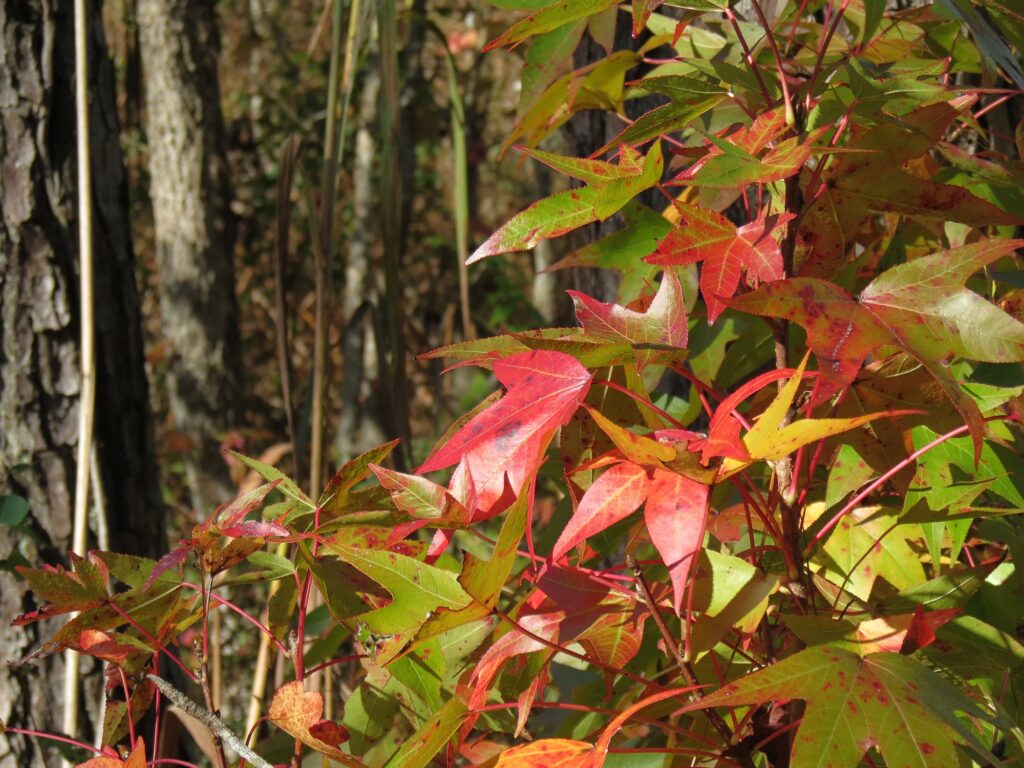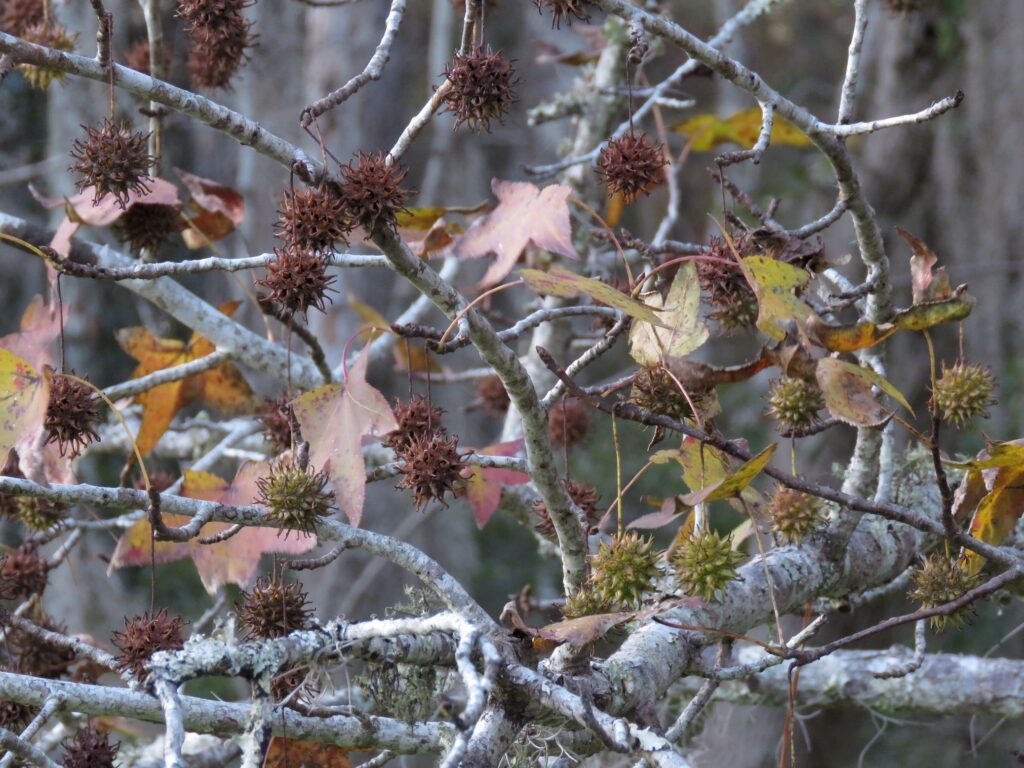




This week for Flora and Fauna Friday is the strangler of drainage, fallower of fields, and perforator of heels: American Sweetgum, Liquidambar styraciflua.
Sweetgum is a fast growing tree. It doesn’t often reach monstrous proportions but can attain a good size. Its bark is pale with thick corky bark in thin vertical strips. Sweetgum leaves are five-lobed and about four inches wide. Spring through summer their leaves are lime-peel-green. In fall they display a palette from lemon-yellow, through mandarin-orange, into the deepest grapefruit-purple you’ve ever seen on a tree. Sweetgum is best known for its fruit: a spherical woody deal full of holes and covered in spikes. This fruit is a multiple of capsules. Each hole contains a single tiny seed with a tiny wing. Sweetgum seeds are a favorite food of Chickadees, Goldfinches, Titmice, and House Finches.
Other than the lovably lumberable Loblolly Pine, the Sweetgum is the most unavoidable tree of the Lowcountry. If the soil is poorly drained, or even just a little damp, there will be a Sweetgum within a stone’s throw. They’re like wet on water in our low lying lands. As you could imply, Sweetgum is highly tolerant of saturated soils. Not as much as say Red Maple or Blackgum but enough to give it purchase most places. This affinity for moisture puts it in direct dispute with drainage. Sweetgum loves ditches and will clog them as quick as you can blink.
In forest ecology, Sweetgum is what’s known as a pioneer species. It’s one of the first trees to return to a fallow field or a clearcut forest. Those small-winged seeds scatter easily on the wind and their sheer volume improves their odds. Once germinated, Sweetgum does well in full sun, grows fast, and outcompetes most grasses. This lets it establish in fallow fields and meadows and quickly grow above the grasses and forbs to begin the process of reforestation. As pioneer tree species take hold and spread, they facilitate the introduction of longer lived, mature forest trees.